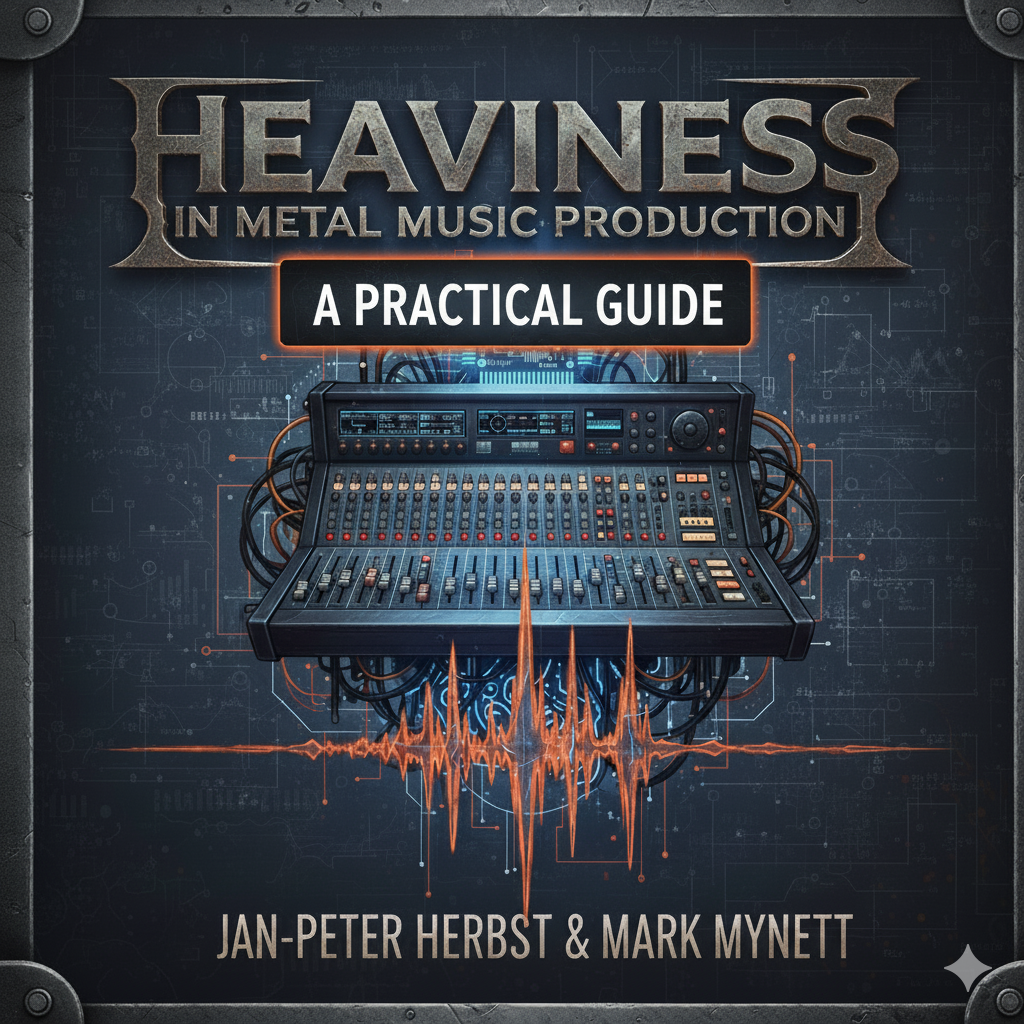Inside Heaviness: A Producer's Guide
This is where our research becomes your practical toolkit. Go hands-on with the core philosophies and technical analyses from our study. Best of all, you can hear audio examples every step of the way.
What Really Creates Heaviness?
Our research revealed that 'heaviness' is not one single sound; it is the result of a producer's core philosophy. We found these approaches exist on a spectrum: from the 'Naturalistic' school (focused on capturing organic performance) to the 'Hyperreal' school (engineering a 'larger-than-life' sound). This guide breaks down our findings chapter by chapter, with practical examples and audio from the project.

1. The Pursuit of Heaviness
Start here. We trace metal's sonic journey and introduce the 'Natural vs. Hyperreal' debate at the heart of our study.
2. The Masters of Metal
Meet the eight world-class producers who participated in the study, from genre veterans like Mike Exeter to modern innovators like Buster Odeholm.
3. The Controlled Experiment
See how we designed the experiment, from creating the 'In Solitude' test track to our 'no reference mix' approach.
4. Shared Foundations of Heaviness
What do all eight producers agree on? Explore the nature of heaviness and the 'Slow, Low, and Dense' formula.
5. The Naturalistic School
A deep dive into 'organic heaviness.' Learn the philosophy that prioritises performance capture and human feel.
6. The Hyperreal School
Explore 'engineered extremity'—the philosophy of using technology to create a sound that is tighter and more powerful than reality.
7. The "Meta-Instrument" Concept
Discover our central finding: how modern producers treat the kick and bass, along with the guitars, as one unified sonic force.
8. Drum Production Techniques
A technical breakdown of sample use and transient design, showing how they create foundational impact.
9. Guitar & Bass Engineering
An analysis of low-end management and dynamic EQ, exploring the 'wall of sound' in guitar and bass processing.
10. Spatial Dimensions of Heaviness
How producers use width and depth to create immersion, from 'in-your-face' to 'in-the-room'.
11. Subjective Dimensions of Heaviness
Why do we perceive heaviness differently? An exploration of listening history and evolving perceptual standards.
12. Application Guide: Choosing Your Approach
Put it all to work. This is your guide to assessing musical context and choosing the right techniques for your own productions.
13. Future Directions: The Evolving Pursuit
Our concluding thoughts on the future of heaviness and the fundamentals that will always define metal.
Glossary of Technical Terms
Your quick-reference for all the production terms used in our guide.
Acknowledgements
Acknowledgements: Funded by the Arts and Humanities Research Council (AHRC), grant AH/T010991/1. With gratitude to the University of Huddersfield (SAH and SCE).
Editorial Note: We used AI-assisted tools (Grammarly Pro, EditGPT Pro, Google Gemini Advanced 2.5) for copyediting and structural suggestions. All analysis, interpretation, and editorial decisions are our own.
Ready to Listen for Yourself?
Reading is one thing; hearing is believing. All the mixes and stems, plus the raw multitracks, are available for free. Download the data, compare the results, and try mixing 'In Solitude' yourself.
Access the Full Dataset →